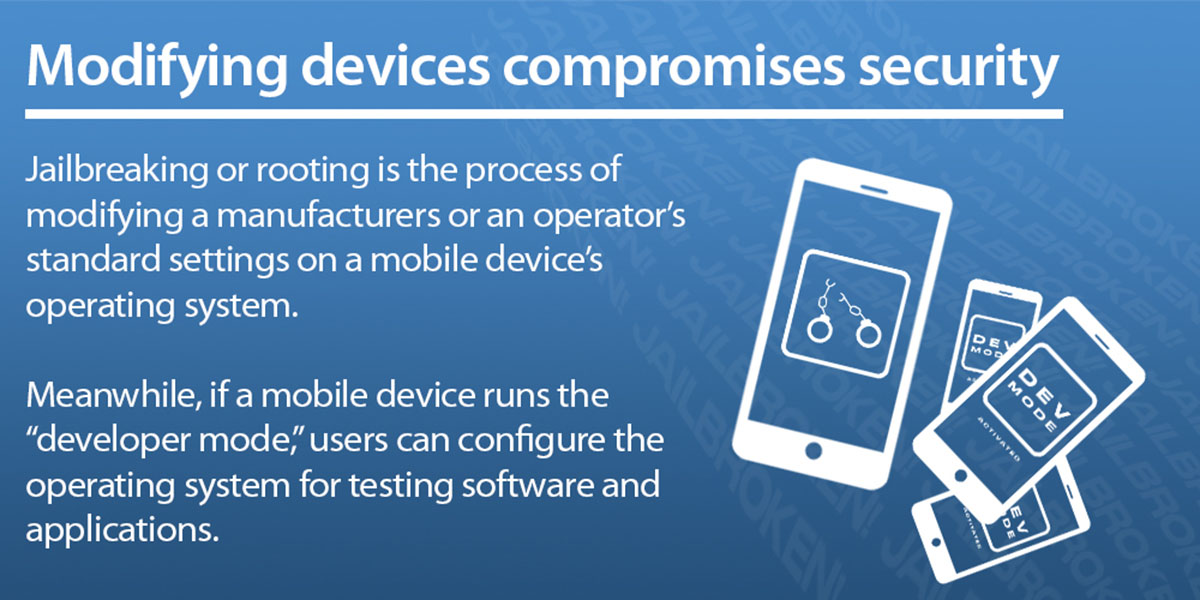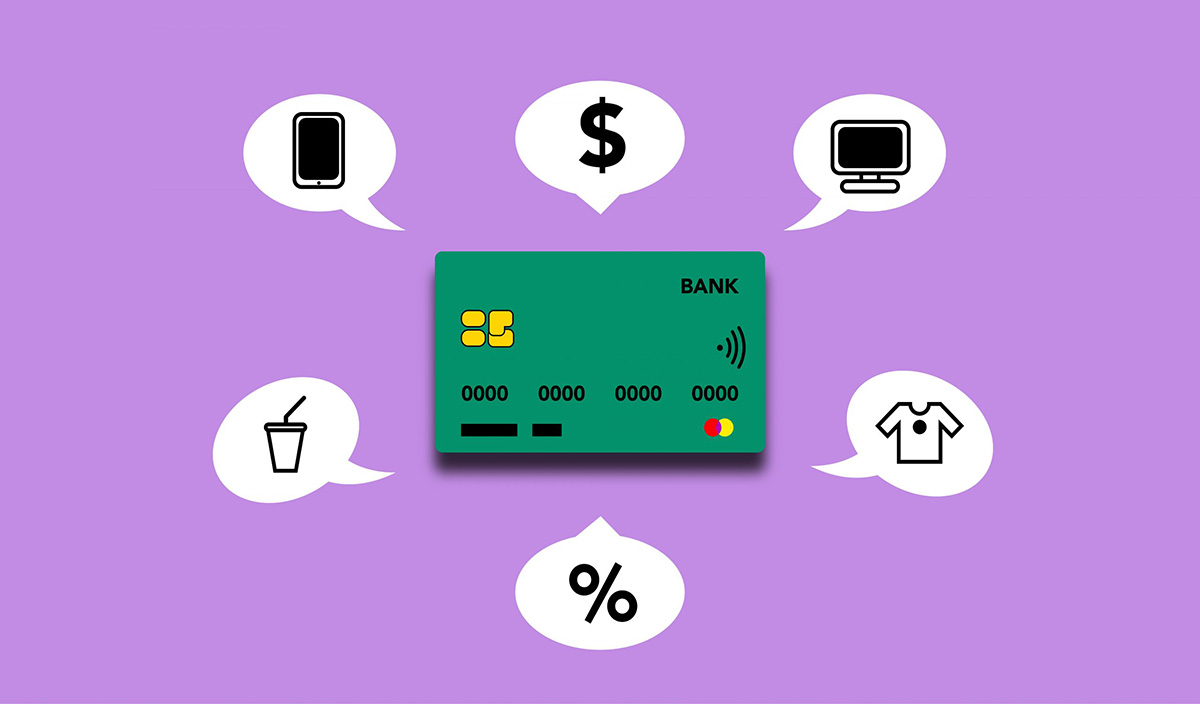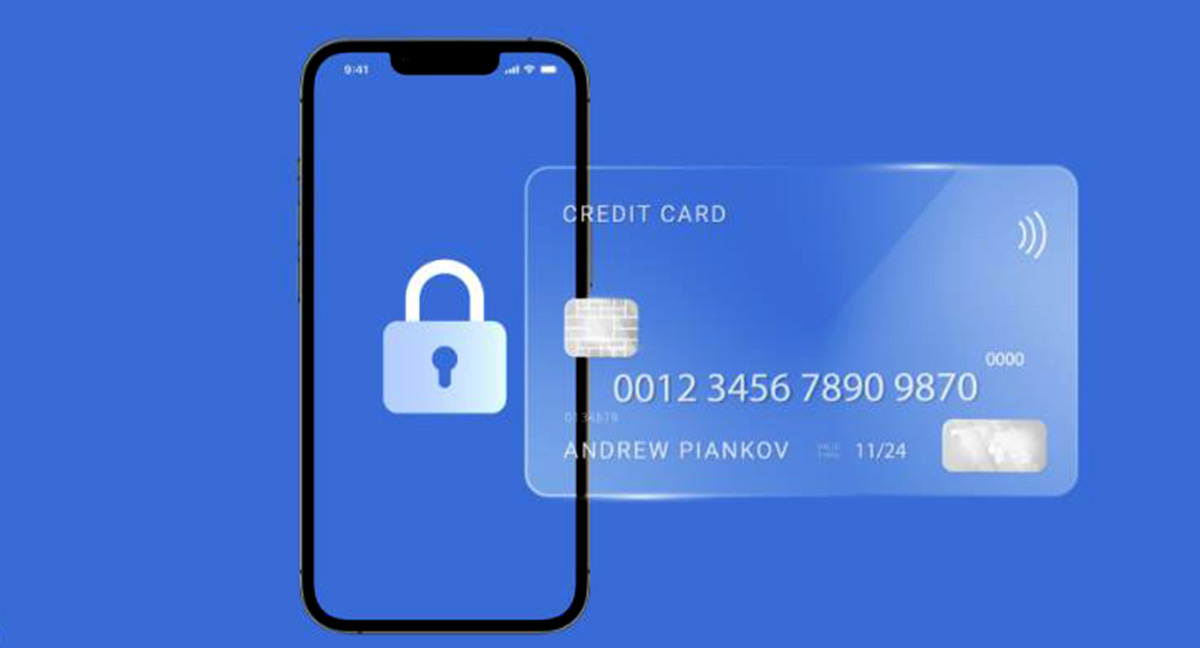Home>Finance>Which Mobile Banking Feature Do Consumers Consider The Most Important


Finance
Which Mobile Banking Feature Do Consumers Consider The Most Important
Modified: February 21, 2024
Discover the most important mobile banking feature for consumers in the world of finance. Stay ahead with convenient and secure financial solutions for on-the-go transactions.
(Many of the links in this article redirect to a specific reviewed product. Your purchase of these products through affiliate links helps to generate commission for LiveWell, at no extra cost. Learn more)
Table of Contents
Introduction
With the rapid advancement of technology, the banking industry has been quick to embrace digital innovation. Mobile banking has become an integral part of our everyday lives, allowing consumers to access and manage their financial accounts on the go. From checking balances to making transfers and paying bills, the convenience and accessibility provided by mobile banking have revolutionized the way we handle our finances.
However, not all mobile banking features are created equal. While some consumers prioritize convenience and accessibility, others place a higher emphasis on security and privacy. In this article, we will explore the key mobile banking features that consumers consider the most important and delve into why these features matter. By understanding consumer preferences, banks and financial institutions can better tailor their mobile banking offerings to meet the demands and expectations of their customers.
Through extensive research and surveys conducted among a diverse group of consumers, we have gathered valuable insights into their perceptions and priorities when it comes to mobile banking features. By analyzing the data, we can gain a deeper understanding of what drives consumer satisfaction and engagement in the digital banking space.
In the following sections, we will discuss the findings of our research, focusing on the overall importance of mobile banking features, including convenience and accessibility, security and privacy, functionality and user experience, and communication and customer service. By examining each of these aspects in detail, we hope to shed light on the factors that significantly influence consumer satisfaction and help banks enhance their mobile banking offerings.
Methodology
In order to determine the mobile banking features that consumers consider the most important, we conducted a comprehensive survey among a diverse group of individuals. The survey consisted of a series of questions designed to assess consumer preferences and attitudes towards mobile banking.
The survey targeted participants from various demographics, including different age groups, income levels, and geographic locations. This approach allowed us to gather a well-rounded perspective on the importance of mobile banking features across different segments of the population.
Participants were asked to rate the importance of different mobile banking features on a scale of 1 to 5, with 1 being “not important” and 5 being “extremely important.” They were also given the opportunity to provide additional comments and suggestions for improvement.
In addition to the survey, we also conducted in-depth interviews with a selected group of participants to gain further insights into their thoughts and experiences with mobile banking. These interviews helped us to better understand the underlying reasons behind their preferences and to uncover any additional features or considerations that may not have been covered in the survey.
Furthermore, we analyzed data from existing consumer feedback and reviews of mobile banking apps and platforms. This information provided us with valuable insights into the features that are frequently praised or criticized by consumers.
By combining these quantitative and qualitative research methods, we were able to gain a comprehensive understanding of the mobile banking features that consumers consider the most important and the factors that drive their satisfaction and engagement.
It is important to note that the results of our research may not be universally applicable to all consumers or reflect the preferences of every individual. However, our findings provide valuable insights and trends that can guide banks and financial institutions in developing and improving their mobile banking offerings to better meet consumer expectations.
Findings
Our research yielded several significant findings regarding the mobile banking features that consumers consider the most important. These findings highlight the key factors that drive consumer satisfaction and engagement in the digital banking space.
Overall, convenience and accessibility emerged as the top priority for consumers when it comes to mobile banking. The ability to easily check account balances, make payments, transfer funds, and perform other essential banking tasks on-the-go is highly valued. Consumers appreciate the convenience of accessing their financial information anytime, anywhere, without the need to visit a physical branch.
Security and privacy also ranked high on the list of important mobile banking features. Consumers want assurance that their personal and financial information is protected from unauthorized access or cyber threats. Features such as multi-factor authentication, biometric identification, and secure transaction protocols are highly sought-after.
Functionality and user experience play a crucial role in consumer satisfaction. Users expect mobile banking apps to be intuitive, user-friendly, and well-designed. They value features such as easy navigation, quick loading times, and responsive interfaces that provide a seamless and efficient banking experience.
Communication and customer service were also highlighted as important factors. Consumers appreciate clear and transparent communication from banks, such as updates on account activity, transaction alerts, and notifications of important account-related information. Additionally, responsive and helpful customer service is highly valued, with consumers expecting prompt resolution of any issues or concerns they may encounter while using mobile banking services.
It is worth noting that while these findings provide valuable insights into consumer preferences, individual priorities may vary. For some consumers, additional features such as mobile check deposit, budgeting tools, or personalized financial advice may hold greater importance.
Overall, banks and financial institutions should strive to create mobile banking experiences that prioritize convenience, security, functionality, and customer service. By understanding and addressing these key factors, they can enhance user satisfaction and engagement, ultimately leading to stronger customer relationships and loyalty.
Overall Importance of Mobile Banking Features
When considering the overall importance of mobile banking features, it is clear that convenience, accessibility, security, functionality, and customer service are the key drivers of consumer satisfaction and engagement.
In today’s fast-paced world, consumers value the convenience offered by mobile banking. The ability to quickly and easily access and manage their financial accounts from their smartphones or tablets is highly appreciated. Whether it’s checking account balances, making payments, transferring funds, or even applying for loans, the convenience of mobile banking allows consumers to stay in control of their finances on their terms.
Security is another crucial factor that influences consumer trust and loyalty. With the increasing prevalence of cyber threats and identity theft, consumers are rightly concerned about the safety of their personal and financial information. Robust security measures, such as encryption, multi-factor authentication, and biometric identification, help instill confidence in mobile banking apps and give consumers peace of mind.
Functionality and user experience also play a significant role in the overall importance of mobile banking features. Consumers expect mobile banking apps to be intuitive and user-friendly, with seamless navigation and a visually appealing interface. Features like quick loading times, easy access to account information, and the ability to perform transactions efficiently contribute to a positive user experience.
Additionally, effective communication and responsive customer service are essential for creating a positive and satisfying mobile banking experience. Timely notifications, transaction alerts, and clear account-related information help keep consumers informed and engaged. Moreover, prompt and helpful customer service when needed builds trust and demonstrates that the bank values its customers.
While the specific importance of each feature may vary among individuals, it is clear that a comprehensive mobile banking experience must encompass these key elements. Banks and financial institutions should focus on aligning their mobile banking platforms with these consumer priorities to deliver a superior and holistic mobile banking experience.
By understanding what drives consumer satisfaction and engagement, financial institutions can continuously improve their mobile banking offerings. Regularly updating and enhancing features based on customer feedback and industry trends will help banks stay ahead of the curve and meet the evolving needs and expectations of their customers in an increasingly digital world.
Convenience and Accessibility
One of the primary reasons why mobile banking has gained widespread popularity among consumers is its unmatched convenience and accessibility. With mobile banking, individuals can conveniently manage their financial accounts and perform banking transactions anytime, anywhere, using their smartphones or tablets.
Mobile banking apps provide users with the ability to check their account balances, review transaction history, transfer funds between accounts, pay bills, and even deposit checks through remote deposit capture. These features eliminate the need to visit a physical bank branch, saving time and effort for consumers who lead busy lives.
Moreover, mobile banking offers round-the-clock access to financial information and services. Whether it’s in the middle of the night, on weekends, or during holidays, users can securely access their accounts and carry out banking activities at their convenience. This flexibility allows individuals to stay on top of their finances and make informed decisions whenever it is most convenient for them.
Another aspect of convenience is the ability to set up recurring payments and schedule future transactions. Users can automate bill payments, loan installments, and other regular expenses, ensuring that their financial obligations are met on time without the need for manual intervention. This feature not only saves time but also provides peace of mind by reducing the chances of missing payments and incurring late fees.
In terms of accessibility, mobile banking eliminates geographical barriers. Users can access their accounts and perform transactions from anywhere in the world, as long as they have an internet connection. This is particularly beneficial for frequent travelers or individuals living abroad, as they can effortlessly manage their finances without the need for physical proximity to their home bank branch.
Furthermore, mobile banking apps are designed to be user-friendly and intuitive, making it easy for individuals of all technical backgrounds to navigate and use them effectively. Features such as quick search functions, clear transaction categorization, and customizable settings contribute to a seamless and efficient user experience.
Overall, convenience and accessibility are crucial factors that contribute to the popularity of mobile banking. The ability to conveniently access and manage financial accounts from anywhere, at any time, offers unparalleled flexibility and empowers individuals to take control of their finances. Banks and financial institutions should continue to prioritize improving the convenience and accessibility of their mobile banking offerings to meet the growing expectations of consumers in the digital age.
Security and Privacy
When it comes to mobile banking, security and privacy are of paramount importance to consumers. With the increasing prevalence of cyber threats and data breaches, individuals are rightly concerned about the safety of their personal and financial information.
Mobile banking apps employ various security measures to ensure the privacy and protection of user data. Encryption technology, such as SSL (Secure Socket Layer) and TLS (Transport Layer Security), encrypts data during transmission, making it difficult for unauthorized individuals to access or intercept sensitive information.
Another widely adopted security feature is multi-factor authentication, which adds an extra layer of protection beyond just a username and password. This typically involves a second verification step, such as a one-time password (OTP), fingerprint scanning, or facial recognition, to confirm the identity of the user. By implementing multi-factor authentication, mobile banking apps significantly reduce the risk of unauthorized access to user accounts.
Biometric identification is another security measure that has gained popularity in mobile banking apps. By using fingerprints, facial recognition, or voice recognition, users can securely log in to their accounts without relying solely on passwords. Biometric data is unique to each individual, making it difficult for unauthorized individuals to impersonate the account holder.
Furthermore, mobile banking apps have advanced fraud detection systems in place to identify and prevent suspicious activities. These systems monitor transaction patterns and flag any unusual or potentially fraudulent activity, providing an additional layer of protection for users.
Banks and financial institutions also prioritize privacy in mobile banking apps. User data, including personal information, account details, and transaction history, is treated with strict confidentiality. Mobile banking apps adhere to privacy regulations and guidelines to ensure that user information is not shared or used for purposes other than those explicitly authorized by the user.
To enhance security and privacy, mobile banking apps often allow users to set up alerts and notifications for account activity. Users can receive immediate notifications for any transactions or account changes, allowing them to promptly identify and report any suspicious or unauthorized actions.
While banks and financial institutions take extensive measures to secure mobile banking apps, it is also essential for users to practice safe and responsible banking habits. This includes using strong and unique passwords, avoiding public Wi-Fi networks when accessing mobile banking apps, regularly updating the app to the latest version, and being cautious of phishing attempts or suspicious links and emails.
By prioritizing security and privacy in mobile banking apps, banks can instill trust and confidence in their customers. Consumer trust is a vital component for the success and adoption of mobile banking, and financial institutions should continuously invest in robust security measures to protect user data and ensure the privacy of their customers.
Functionality and User Experience
In the realm of mobile banking, functionality and user experience play a crucial role in attracting and retaining customers. Consumers expect mobile banking apps to be intuitive, user-friendly, and capable of meeting their diverse financial needs.
One key aspect of functionality is the ease of navigation. Mobile banking apps should have a clear and intuitive interface that allows users to effortlessly navigate through different sections and perform various banking tasks. The ability to find relevant information quickly and easily is essential for a positive user experience.
Additionally, mobile banking apps should be capable of delivering a wide range of functionalities that align with the needs and expectations of consumers. These may include account balance inquiries, transaction histories, bill payments, fund transfers between accounts, setting up recurring payments, budgeting tools, and even the ability to apply for loans or credit cards.
Another important factor in functionality is the seamless integration of external services. Mobile banking apps that can easily link with other financial platforms or third-party services, such as payment apps or financial management tools, provide users with a more comprehensive and cohesive banking experience.
User experience is closely intertwined with functionality. A well-designed mobile banking app should offer a visually appealing and responsive interface that provides a smooth and enjoyable user experience. Quick loading times, minimal lag, and seamless transitions between screens contribute to a positive user experience.
Personalization also plays a vital role in user experience. Mobile banking apps that allow users to customize the layout, display preferences, or set up personalized alerts and notifications create a more tailored and user-centric experience. The ability to choose what information is displayed prominently and how it is presented enhances user engagement and satisfaction.
Accessibility is another key consideration in user experience. Mobile banking apps should be compatible with various devices and operating systems, ensuring that users can access and enjoy a consistent experience regardless of their device preferences.
Regular updates and improvements to the functionality and user experience of mobile banking apps are crucial. By listening to customer feedback and monitoring industry trends, banks can identify areas of improvement and implement new features or enhancements to meet evolving customer expectations.
Overall, functionality and user experience have a significant impact on the success of mobile banking apps. Banks and financial institutions need to prioritize these aspects in order to attract and retain customers in today’s highly competitive digital landscape. By providing a seamless and user-friendly experience, banks can enhance customer satisfaction, encourage frequent app usage, and foster long-term customer loyalty.
Communication and Customer Service
Effective communication and responsive customer service are key components of a successful mobile banking experience. Consumers expect clear and timely communication from their banks, as well as quick and reliable support when needed.
Mobile banking apps should provide users with transparent and accessible communication channels. This includes delivering important account-related information, such as transaction alerts, account updates, or notifications of upcoming payments. Clear and concise communication allows users to stay informed about their financial activities and make better-informed decisions.
Furthermore, mobile banking apps should offer multiple customer service options to address user queries or concerns. Common channels include in-app messaging, live chat support, email support, and telephone helplines. Quick response times and knowledgeable support staff contribute to a positive customer service experience.
Proactive customer service is also highly valued. For example, mobile banking apps can provide personalized recommendations or insights based on user spending patterns or financial goals. This level of proactive guidance can help users better manage their finances and make informed decisions.
Another important aspect of communication and customer service is responsiveness. Users appreciate prompt resolution of any issues or concerns they may encounter while using mobile banking services. Quick and efficient customer service demonstrates banks’ commitment to their customers’ needs and helps build trust and loyalty.
Moreover, banks can leverage mobile banking apps to offer self-service options to customers. This includes features such as card blocking or unblocking, card replacement requests, PIN change options, and account statement downloads. Putting more control in the hands of users empowers them and reduces their dependency on customer service for routine transactions or requests.
By actively seeking feedback and implementing user suggestions, banks can improve their mobile banking apps to better cater to the needs and preferences of their customers. Regularly updating the app based on user feedback not only enhances the user experience but also provides a sense of ownership and customer satisfaction.
Customer education is another important aspect of communication. Clear and concise instructions on how to use different features and functionalities within the mobile banking app can help users understand and make the most of the available services. Educational content, such as articles or tutorials, can also be included within the app to enhance users’ financial literacy.
Overall, effective communication and responsive customer service are essential for building positive customer relationships in mobile banking. By prioritizing clear and timely communication and providing excellent customer support, banks can foster a sense of trust and loyalty among their customers while enhancing the overall mobile banking experience.
Conclusion
The importance of mobile banking features cannot be overstated in today’s digital age. Consumers are increasingly reliant on mobile banking apps to conveniently and securely manage their finances. By understanding and prioritizing the key features that consumers consider important, banks can deliver a superior mobile banking experience that meets the evolving needs and expectations of their customers.
Our research reveals that convenience and accessibility are top priorities for consumers. Being able to perform essential banking tasks on-the-go, without the need to visit a physical branch, is highly valued. Additionally, security and privacy rank high on the list of important features, with consumers seeking robust security measures and protection for their personal and financial information.
Functionality and user experience are crucial factors that drive customer satisfaction. Intuitive navigation, a wide range of functionalities, and a visually appealing interface contribute to a seamless and enjoyable mobile banking experience. Effective communication and responsive customer service are also vital, with users appreciating clear and timely communication and quick resolution of any issues or concerns they may encounter.
In conclusion, banks and financial institutions should prioritize the development and enhancement of mobile banking features that align with these consumer expectations. By continually improving convenience, security, functionality, and customer service, banks can foster trust, loyalty, and engagement among their customers in the digital banking space.
It is important to note that consumer preferences may vary, and banks should continually monitor and adapt their mobile banking offerings to meet changing demands and technological advancements. By staying attuned to customer feedback and industry trends, banks can continue to innovate and deliver mobile banking experiences that exceed consumer expectations, and, in turn, strengthen customer relationships and drive business success.














